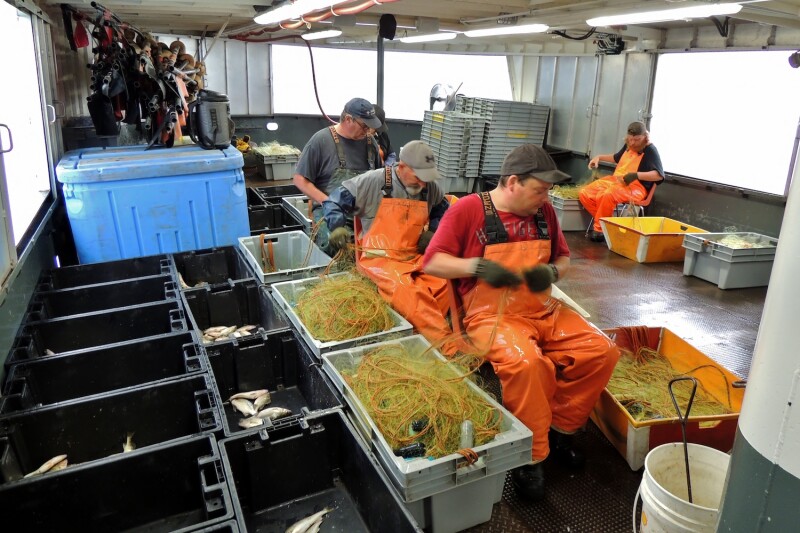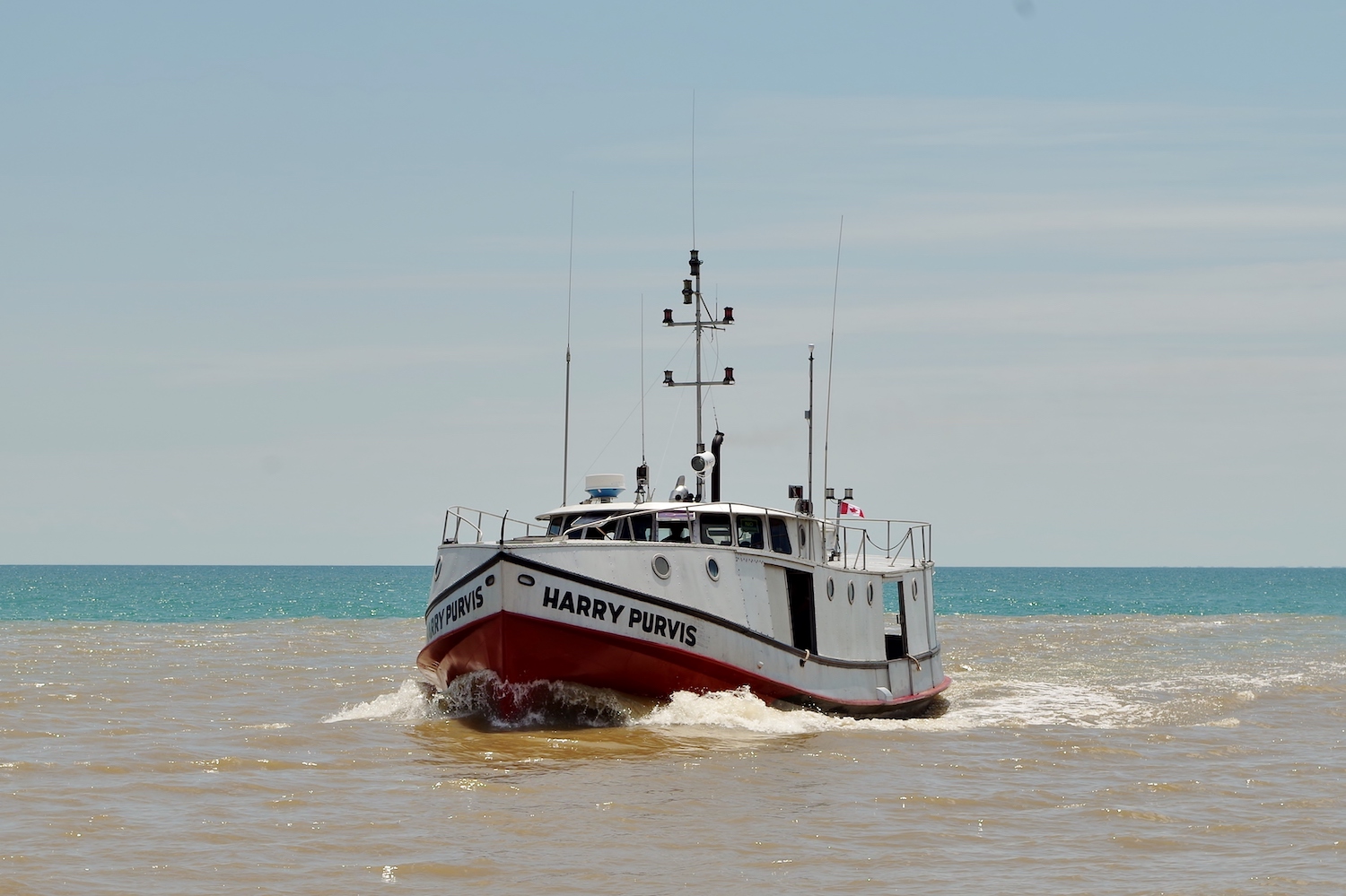Few Great Lakes fish tugs builders remain, but the legend lives on
The days of building new fishing vessels for the Great Lakes may be over. No new boats have been built in years, and the fresh water of the lakes tends to help existing boats, particularly the steel ones, last for decades. But the fishermen from Erie to Superior value the history of the vessels commonly known as “fish tugs.”
Bob Nelson of Bayfield, Wisc., recalls the last days of his grandfather, Frank Muhlke, building wooden fish tugs for the once vibrant commercial fisheries that have been in decline since landings value (adjusted for inflation) peaked in 1952. “There are a few of my grandfather’s boats still around,” says Nelson. “But I don’t think any of them are still fishing.”
Muhlke arrived in Bayfield in 1924 and started building wooden fish tugs in 1934.
“I wrote this book about him,” Nelson says. “I remember the shop and all the tools were still there when I was a boy.”
According to Nelson’s book, “A Bayfield Boat Builder,” the offsets for the shape of the hull came from a half model that Muhlke carved. Muhlke planked his boats “loosely-tight” to allow for the dry wood to shrink or swell. “Dry wood soaks up and expands which could cause a buckling effect,” Nelson writes. “‘Oakum’, horse hair seam filler was tapped into the plank seams which may have shown some daylight.”
Nelson continues: “Muhlke’s favorite choice of building material for planking strength was clear White Oak. Then ‘lash-a-tar’, E-oil or creosote was applied to ensure a dry bilge and wood protection. Often the lakeside hulls of his boats were covered with a light gauge tin that protected them somewhat from the spring skim, harbor ice, and ice flows common in April and December.”
In the building process, Muhlke laid the oak keel first, Nelson continues. The keel may have been local red oak cut to the length required, or Muhlke may have hand sawed the raw material to size. He then shaved and shaped the keel with a shipwright’s or carpenter adze, and a slick, a 36-inch wood chisel with a 4-inch beveled edge.
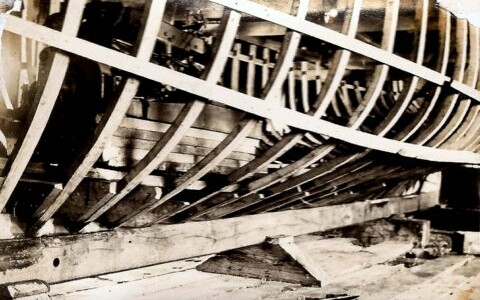
Muhlke shaped the bow and stern stems in similar fashion for his double enders. “Square or fan-tail stern options were available,” Nelson notes.
Dependent on structural need, Muhlke steamed oak ribs in a 20-foot sweat box, and set them up twelve to eighteen inches on center to create his hull shape.
“Muhlke’s boats basically held the same lines, the sweep and swale,” writes Nelson. “By some accounts of fishermen his boats rolled quite a bit but held tight to nets being lifted. Design form remained consistent on all his boats, and a 5 to 6-foot draft created stability. The 8 to 10-foot beam provided for ample cabin and work deck areas. Muhlke’s rigs had a capacity to carry 5 to 7 gross tons of cargo.”
As Nelson explains, the floor joists were bolted in place or screwed to on-center, and the engines of the day, Chryslers, Buick, or Universals were mounted during the rib building phase. Muhlke then proceeded planking, and building the pilot house - either center-ship or at the stern.
Muhlke then installed the drive shaft and propeller, rudder, running lights, and steering wheels mounted in the pilot house and lifting gangway. With the finished boat ready on rollers and skids, a team of horses hauled it to the lakeshore, located nearly one block to the south of Muhlke’s boat barn and yard.
Family ties and stories are part of the Great Lakes heritage. “My great grandfather, George Gamble built the first all electrically welded fishing vessel on the Great Lakes,” says Mike Scruton of Port Oxford, Ontario, on Lake Erie.
“He built a couple of wooden ones, then he got together with a guy named Thomas Edison, you might of heard of him. They got together with another guy and started messing around with coat hangers and nails and melting different things with electricity. I wasn’t there, right? This is the story my family tells. But my great grandfather built the first welded boat, the Ferroclad, around 1937.”
According to Scruton, welding was still not trusted in the 30s, as welds tended to crack in cold water. He believes steel boats at the time were more often riveted. But the advantages of welding outweighed the risks, and steel fish tugs dominated the industry through the height of the Great Lakes fishery in the 1950s, and the rest of the 20th Century.
Great Lakes fisherman George Purvis tells a slightly different story regarding welded tugs. “The first welded fish tug was the Ciscoette built by Gamble in 1934 for Alex Purvis my grandfather,” says Purvis. “She was supposed to be the first welded boat in the British Empire.”
Great Lakes fish tug historian Shaun Vary has a story born of extensive research: “George Gamble built the 'composite' hulled Smith Bros. in 1927,” says Vary. “Her hull was wood and steel with steel plating fitted. There was some early electric welding involved in her construction. Though the Clara B. is generally considered to be the first all-welded steel hulled fish tug, at least on the Canadian side. She was built by Russ Bronson at Port Stanley in 1928. George Gamble was a definitely a groundbreaker in the industry, he built the Ferroclad in 1931. She still exists, but mostly in name only.”
According to Vary, the Ferroclad was rebuilt as a passenger vessel in 1988, with very little of the original hull saved, and later converted back into a fish tug. “Gamble built the Ciscoette in 1934, and it has been reported that she was the first electrically welded hull to be certified by the Board of Trade in the British Commonwealth. I personally have no documentation to back this up with,” he says.
Most tugs on the lakes would qualify as vintage. Lake Superior fisherman, Ron Matson, has a 36-foot tug that fishes out of Munising, Michigan, primarily for whitefish. “I’ve got it hauled out right now at Dollar Bay,” he says. “We put a new steel on the bottom on it. I got to get down there and get it.” Matson has his own crew doing the work. “My boat was built in 1944 at Marinette. They built a lot of them.”
Marinette Marine remains the only shipyard on the Great Lakes to build vessels for the U.S. Navy, and it is now active as Fincantieri Marinette Marine. But no one there now was there in the 1940s when the yard was building fish tugs. The longevity of the tugs and the limitations of the fishery mean that few boats get built these days.
“Off the top of my head, the last large fish tug built was likely The Purvis, built by Hike Metal in 2003/2004,” Shaun Vary writes on his Facebook Page, Great Lakes Fish Tugs. “However, the new trap netter Dawn Leigh was built at Cleveland just a few years ago. As for major rebuilds, the last was likely the M and J at Hike Metal. She emerged completely rebuilt as the William T.R. in 2006.”
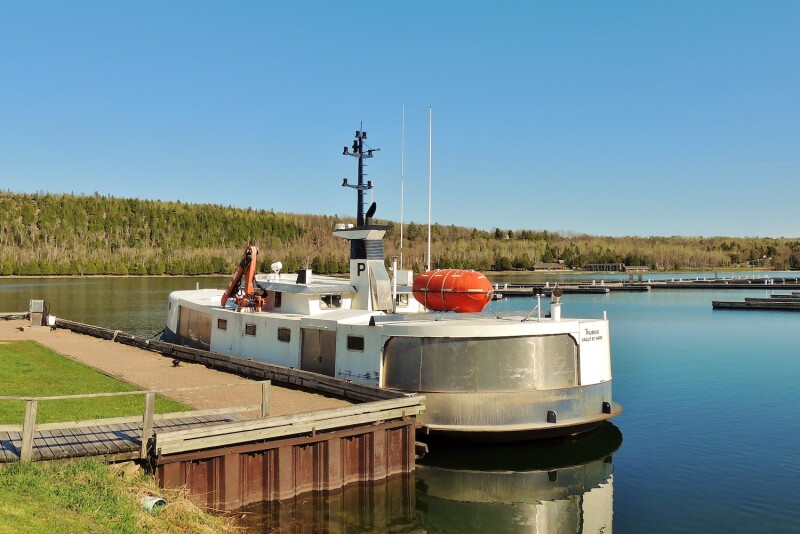
“We are actively fishing and have been since 1882,” says George Purvis. “The Purvis is our newest tug built on my design by Hike Metal in 2004 and she handles exceptionally well.”
But according to Tony Oliveira, shop manager at Hike Metal in Wheatley, Ontario, the last fish tug they built was the Jack’s Queen. “That was around 2005,” he says. “We built it right after the Purvis. It was an 85-foot gillnetter. They mostly fish for yellow perch.”
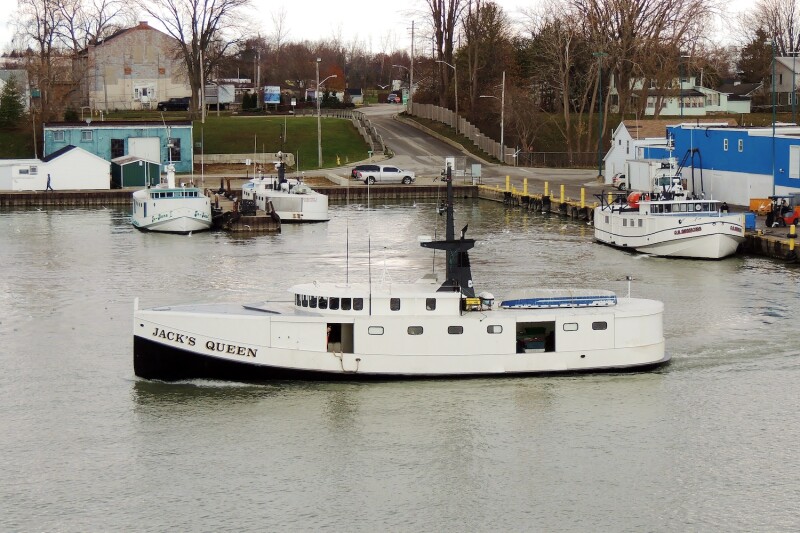
The typical Great Lakes fish tug is built with what they call a turtle back, a thin steel enclosure that protects the entire deck from the weather. Usually two sliding doors, one forward, one aft give the four to six-person crew access to the gear for hauling and setting.
“We use ¼-inch steel on the bottom,” says Oliveira. “Then 3/16ths up to the deck level and 1/8ths for the turtle back and wheelhouse. Sometimes people want 5/16ths sheathing on the bow to protect from the ice – we put 5/16ths on the Jack’s Queen, but with quota these days, everyone has got their quota by December, so it doesn’t matter as much.”
As Oliveira describes the fishery, the tugs make daily trips to haul their nets, and keep fish in insulated totes on deck. “They load ice every day. They put the fish into 100-pound boxes, and then ice them into the 500-pound boxes. They don’t have fish holds. They don’t need them.”
Below deck a 380-hp Volvo-Penta D6 powers the Jack’s Queen. “It’s got a Twin Disc 3:1 gear,” says Oliveira. “And a 3 ½ -inch Aquamet-17 shaft, and tail shaft. I don’t remember what the wheel was, a four-blade, I think.”
In addition to the Volvo-Penta, the Jack’s Queen has a 20kW genset. “They have a hydraulic hauler to lift the nets,” says Oliveira. “They have some electronics, a radar, a couple of radios, two sounders fish finders. I do believe it’s all Furuno.”
Hike Metal does much of its own engineering and design, Oliveira notes. “We designed the Jack’s Queen,” he says. “We have C&C laser cutters now, but we didn’t then.” Which means the crew at Hike Metal did all the cutting and fitting by hand, stick building, as some call it. Old style.
“It took about 8 months to build, we built it right after the Purvis,” Oliveira says. While the fish tug building business has fallen off, other work and fish tug repairs keep Hike Metal busy. “We have 20 guys on the shop floor,” says Oliveira. “Around 9 people in the office.”
With people like Bob Nelson, Mike Scruton, Tony Oliveira, Shaun Vary and many others tracking the current and past histories of Great Lakes fish tugs – even if the details get a little sketchy – the iconic craft will continue to claim their places on the Great Lakes, catching fish and feeding people.
